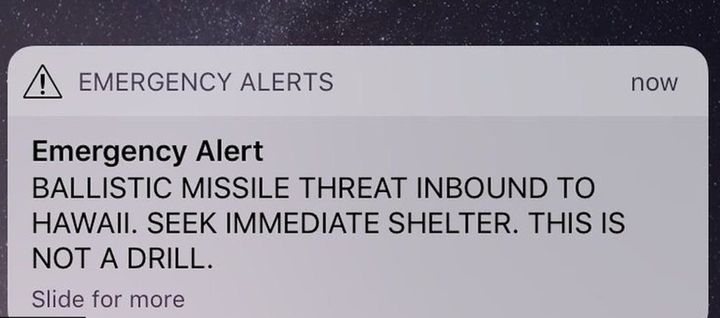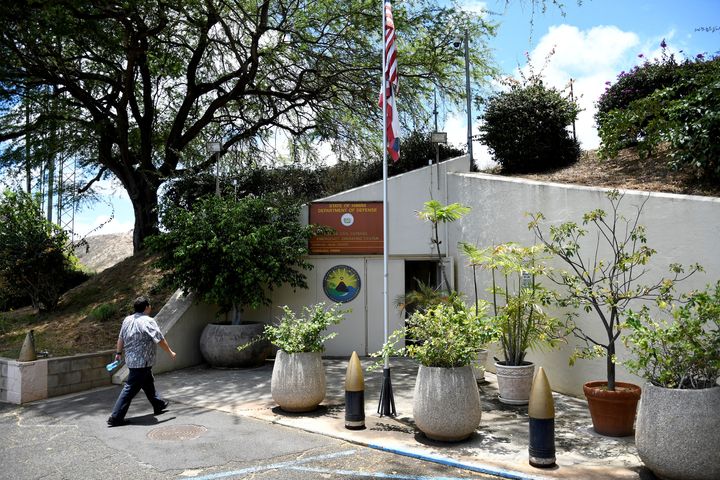
A Hawaii civil defence employee who issued a false missile alarm that caused panic across the state mistook a drill alert for an actual attack, investigators have said.
The employee has since been fired and the top two civilian officials at the Hawaii Emergency Management Agency (HEMA), administrator Vern Miyagi and executive officer Toby Clairmont, resigned in a shakeup stemming from the scare, it was announced at a news conference in Honolulu.
There are also proceedings to suspend without pay a mid-level agency manager who played a major role in devising the procedures and checklists for HEMA’s missile alerts and drills, said Bruce Oliveira, a retired National Guard general who led a review of the January 13 blunder.

The investigation found the system for activating a missile alert and conducting emergency drills was deeply flawed and lacking clarity, fail-safe controls or even a pre-programmed way of issuing a false alarm notice to the public.
Those shortcomings came into play the day a supervisor decided to initiate a drill during a weekend shift change, leading a warning system officer to wrongly transmit a live missile alert to mobile phones and broadcast stations statewide.
The message, issued amid heightened tension over North Korea’s nuclear weapons program, stated: “EMERGENCY ALERT BALLISTIC MISSILE THREAT INBOUND TO HAWAII. SEEK IMMEDIATE SHELTER. THIS IS NOT A DRILL.”
It went uncorrected for 38 minutes and triggered hysteria and confusion across the Pacific island state.
Oliveira said the unnamed employee who activated the false alarm was a 10-year veteran of HEMA with a history of job performance issues, including twice confusing drills with real emergencies.
He acknowledged the employee, who had been “counselled and corrected” for past issues, had remained assigned to the warning system team despite misgivings by co-workers over the years.

According to the employee’s written account, he misunderstood a simulated missile notice recorded by a supervisor and played over a speaker phone to mimic an actual call from the US military’s pacific command.
Following procedures he thought were correct, he activated the state’s missile launch alert from a drop-down computer menu and, believing an attack was imminent, clicked “yes” when a system software prompt asked, “Are you sure that you want to send this alert?”
The simulated missile warning played over the phone included the words: “This is not a drill,” and the repeated phrase, “Exercise, exercise, exercise”.
Five others in the centre said they heard the “exercise” phrase, which came at the start and end of the message, Oliveira said. The system officer at the terminal said he only heard: “This is not a drill.”
Moments later, realising he had done the wrong thing, the employee “became confused, he froze, and other employees had to take over his responsibilities”, Oliveira said.
The Federal Communications Commission (FCC), which oversees all US wireless alert systems, issued its own report on Tuesday, concluding the false alarm stemmed from human errors, confused wording in the drill and lack of adequate supervision.
Hawaii Governor David Ige, whose response to the incident was called into question, said changes had been implemented so there would be no repeat of the incident.
